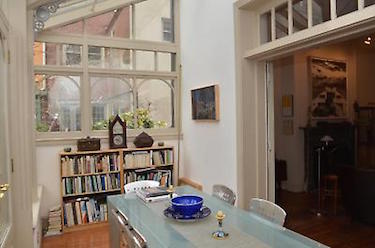We are thrilled that a current Solo listing has been featured in a New York Times piece on what $1.2 million can buy in three different metropolitan areas in the U.S. Read on to see how Philadelphia and our listing stacked up against two other cities. We think the city and the property both shine!
In the article, Solo’s listing for 309 Spruce Street in Society Hill is showcased alongside a downtown loft in Kansas City, MO, and a modern rancher in Los Angeles.
The New York Times highlights the property’s many lovely features, including its original wide-plank pine floors and marble mantels, updated kitchen, and the fact that it is on the end of a row, meaning more windows and natural light.
Speaking of natural light, the photographer also beautifully captured the glass conservatory off the living room, a stunning and unique asset.
As for the other properties, the L.A. contemporary boasts a swimming pool, and a sleek modern look with polished concrete floors. The Kansas City apartment has a skylight to die for and skyline views.
But if you look beyond the listings to the neighborhood context, 309 Spruce Street’s location in the heart of Society Hill puts it smack dab in the middle of one of the most historic neighborhoods in America, as well as mere blocks from public transit, shops, and restaurants galore.
Not that it’s a competition, but if it was, we think 309 Spruce Street wins!

